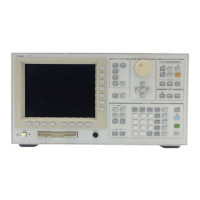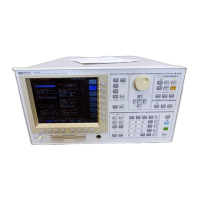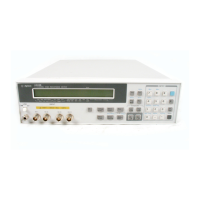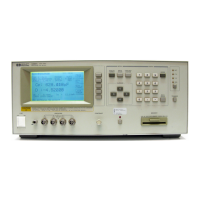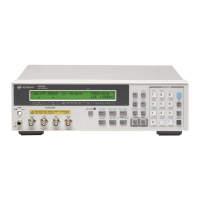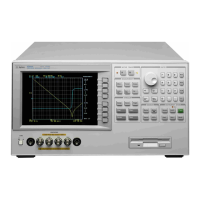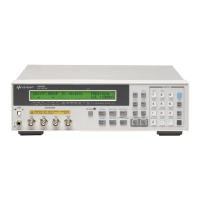3-4 Agilent 4155B/4156B User’s Guide Vol.2, Edition 5
Measurement Functions
Stress Force Function
Stress Output Channels
Stress output channel is defined as the unit used to force stress.
Available Units
The 4155B/4156B can force dc voltage stress, dc current stress, and ac voltage
stress (by PGUs in Agilent 41501A/B), but cannot force ac current stress.
Table 3-1 shows available units and allowable modes for stress sources.
Table 3-1 Available Units and Modes for Stress Force
Also, SMUs can be set to COMMON mode.
Setting the Stress Channels
You can set up units for the stress force state on the STRESS: CHANNEL
DEFINITION screen independently from the measurement and standby states that
you set on the CHANNELS: CHANNEL DEFINITION screen.
For example, you can use the same SMU as a measurement channel in the
measurement state, and as a stress force source in the stress force state.
To set a unit to the stress channel, select SYNC in the FCTN field for the unit. If you
select NSYNC, the 4155B/4156B does not monitor the bias output time for the unit.
The unit is called as non-stress channel or bias channel in this manual.
To use the stress force function, at least one unit must be set to the stress channel
which the FCTN field is set to SYNC. You can select up to four stress source
channels among SMUs, VSUs, and PGUs.
If a unit is set to STBY ON on the CHANNELS: CHANNEL DEFINITION screen,
the unit cannot be set to the stress channel.
If you use two PGUs as ac pulse source, both PGUs must be the stress channel or the
non-stress channel. This means that if PGU1 is a stress channel, PGU2 must be a
stress channel, not non-stress channel.
Units DC Voltage Stress DC Current Stress
AC Voltage Stress
(Pulsed Source)
SMU yes yes
VSU yes
PGU yes yes

